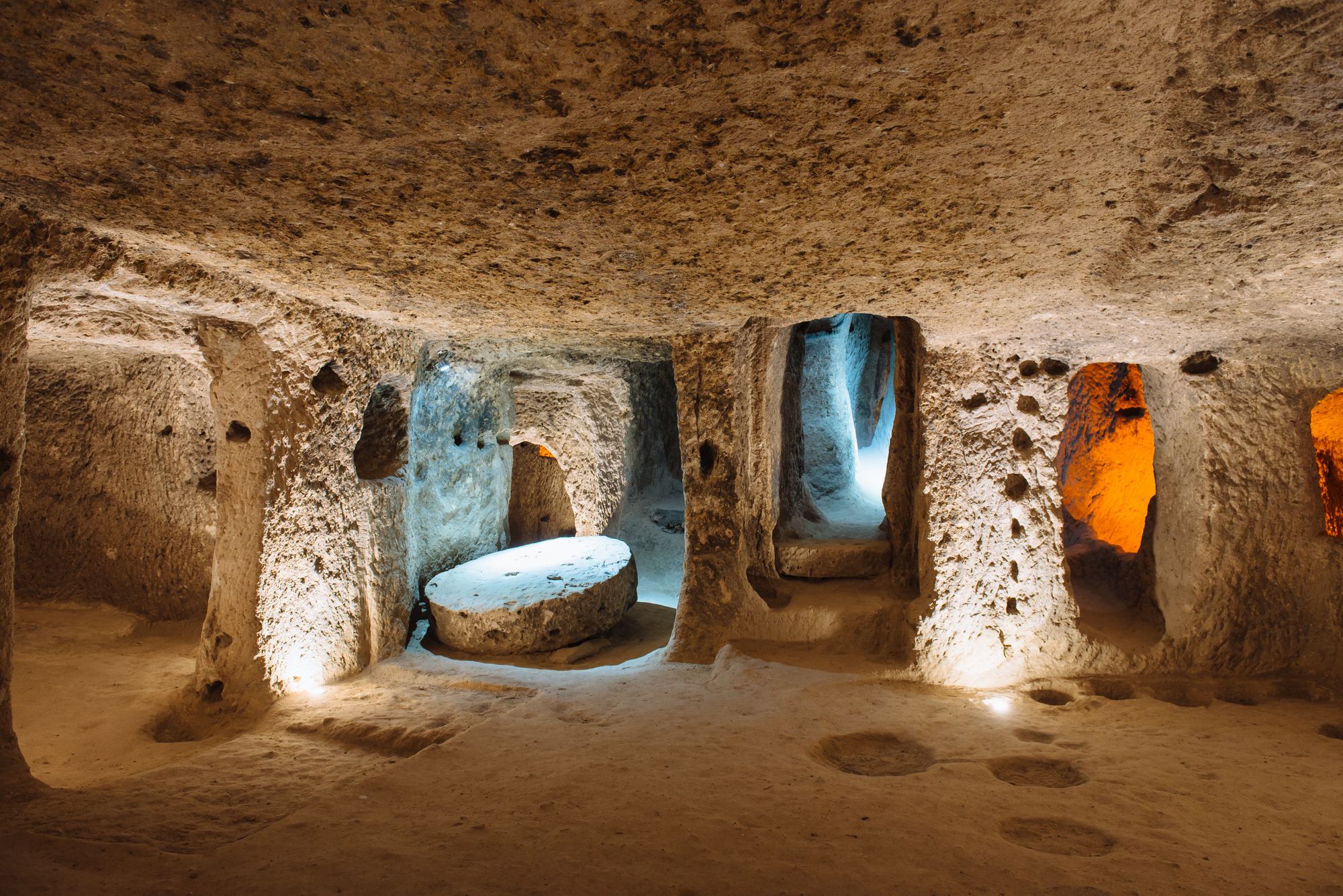The land of Cappadocia has always been famous for its eroded caves. There are hundreds of underground cities in this area, but the most famous and largest is Derinkuyu. With a depth of more than 76 meters and a capacity of up to 20,000 people, the city of Derinkuyu has a system of housing types carved directly into the ground so that people can live and survive in the face of invaders.
Mysterious City of Refuge

Derinkuyu Underground City
To this day, no one has been able to determine the exact year of its creation and the actual group of people who built it in history. The earliest written mention of underground cities in Cappadocia comes from a Greek historian named Xenophon in 370 BC.
In his work Anabasis, Xenophon writes: "The houses here are underground, with a mouth like a well, but spacious underneath; there are entrances reserved for animals, and the inhabitants go down by ladders. All animals are kept and exploited for food right in the houses." Therefore, if 370 BC is taken as a benchmark, this city is at least nearly 2,400 years old and its real age is certainly much older than that.

Rooms with different functions...
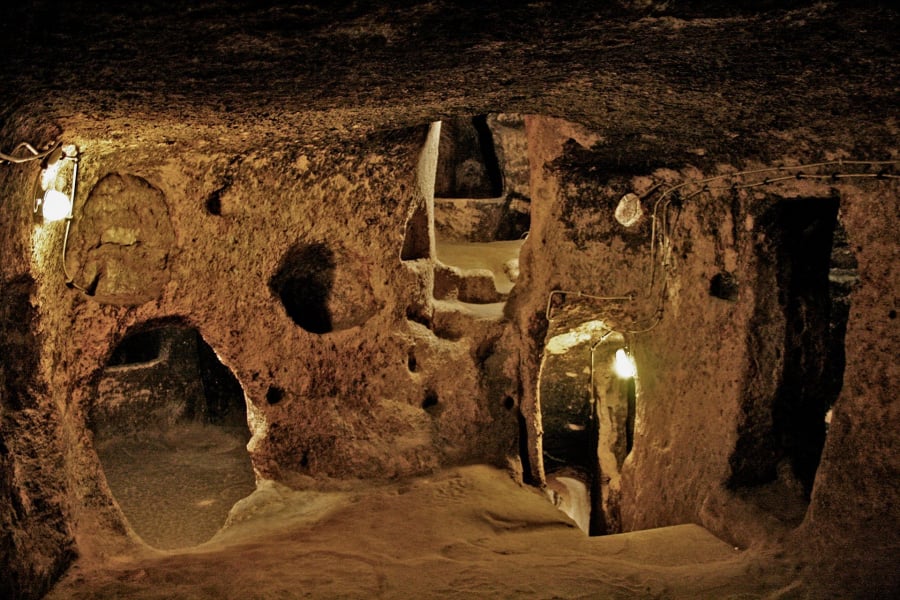
...form an isolated system
As a major trading hub between Asia and Europe, the regions of Anatolia are extremely vulnerable to invasion, and have a history of war and instability. The ancient people here created and used underground cities as a safe haven from foreign invaders. In 1963, while renovating a house above ground, some people accidentally discovered this magical underground city. While exploring the passage, workers gradually realized the incredibly amazing size of up to 18 floors of the ancient city (so far only 8 floors have been exploited and accessed). Researchers have found kitchens, bedrooms, bathrooms, food storage rooms, livestock barns, oil presses, wine presses, weapon storage areas..., even churches, schools and mausoleums. More than 50 ventilation shafts are designed to bring air down from above, while thousands of smaller ducts are distributed throughout to exhaust air outside.
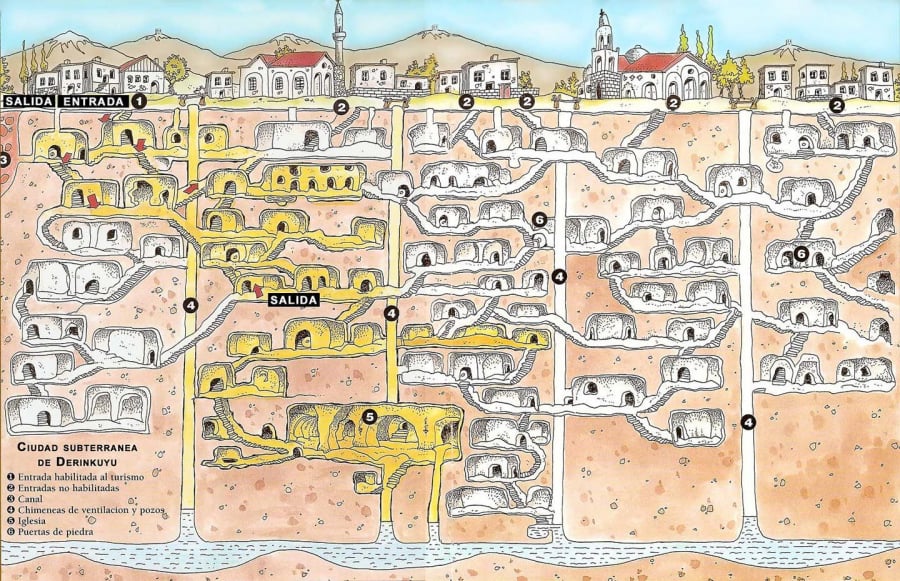
Partial diagram of the underground city of Derinkuyu
It is clear that the underground city of Derinkuyu was the perfect plan for a self-sufficient underground life, just in case. Some archaeologists believe that there was an 8 km long passage connecting Derinkuyu to another underground city, Kaymakli. This suggests that there was cooperation between different civilizations in the Cappadocia region.
Unique and superior design
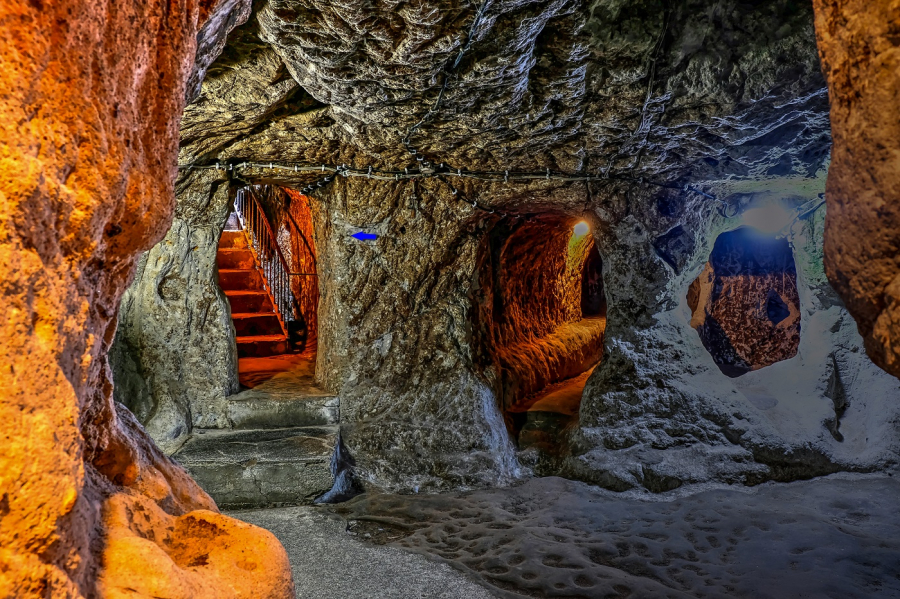
Millions of years ago, volcanic eruptions created thick layers of ash called “tuff”. Over time, the tuff became embedded in a soft rock, making it easy to carve but relatively stable. The ancient inhabitants of Anatolia realized they could carve their homes right into the ground on these hillsides. Thus, rock-cut settlements arose in the Cappadocia region, and Derinkuyu is the deepest underground rock “city” discovered to date.
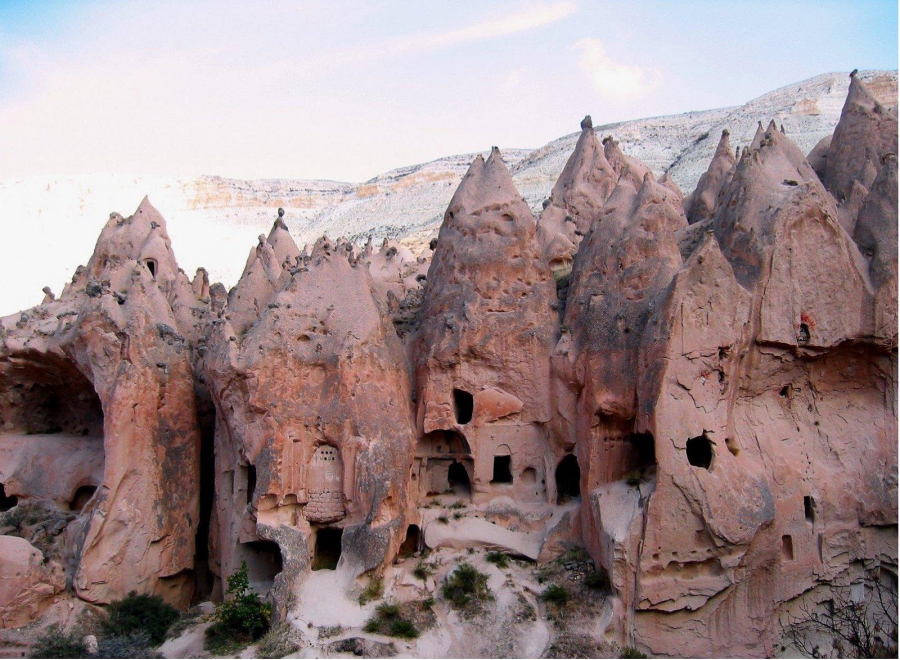
Above the underground city of Derinkuyu
The builders of Derinkuyu designed the underground city with safety features. The door is a large rotating disc-shaped stone with a small hole in the center. Some speculate that this hole allowed soldiers to fire arrows, or perhaps a powerful beam was fired through the hole to allow the user to open and close the door more easily.
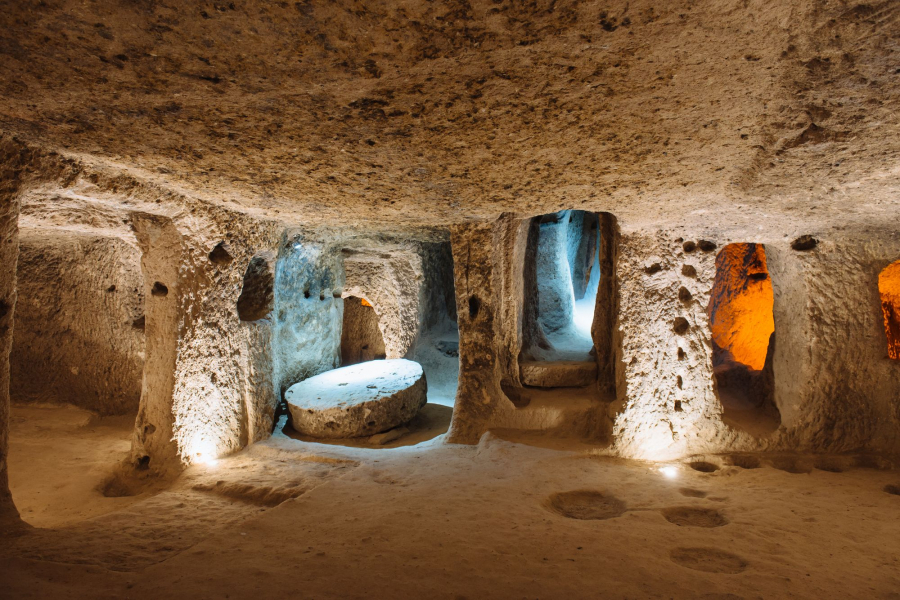
"Simple" architecture that has existed for nearly 2,500 years
Each level of the city is connected to the next by a corridor with such stone doors. The underground city also has a secure water storage system. However, the wells in the city are not connected to each other and not all of them go to the surface. This protects the residents from invaders who could poison the entire water system from the outside.
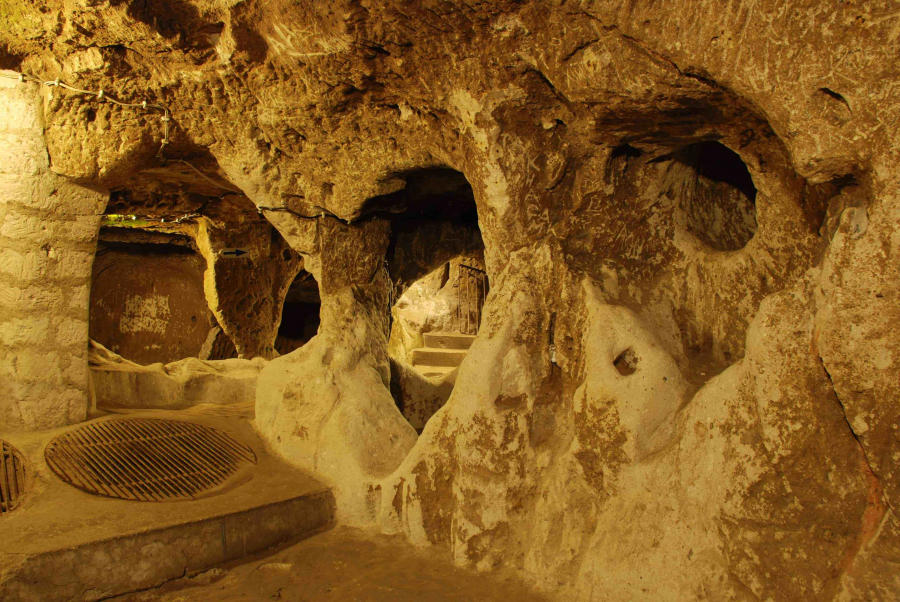

Derinkuyu also protects its inhabitants from the scorching heat of summer and the freezing, snow-covered winters. The temperature remains fairly stable year-round at around 13 degrees Celsius, providing a cool environment for animals, as well as maintaining a supply of fresh water and keeping food fresh.

Ancient Derinkuyu in the sunset
Cappadocia in general and the city of Derinkuyu in particular are extremely special underground relics that still exist almost intact. This mysterious underground city has contributed significantly to the uniqueness of Turkish tourism - a land that still retains countless ancient cultural and historical imprints.





